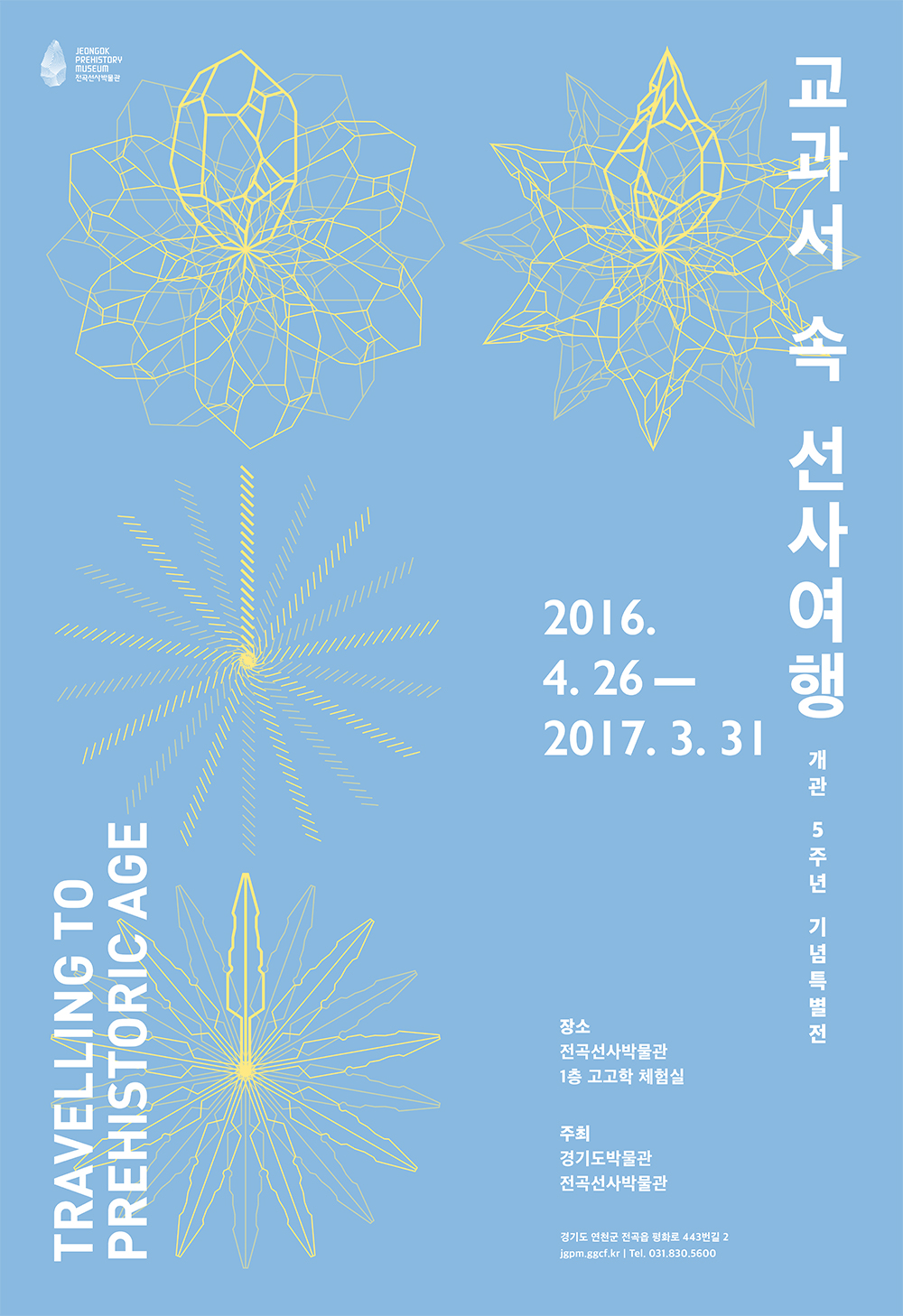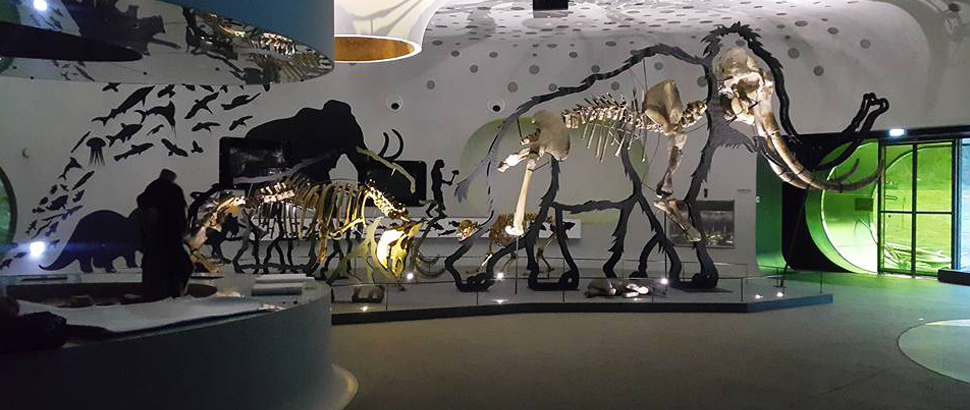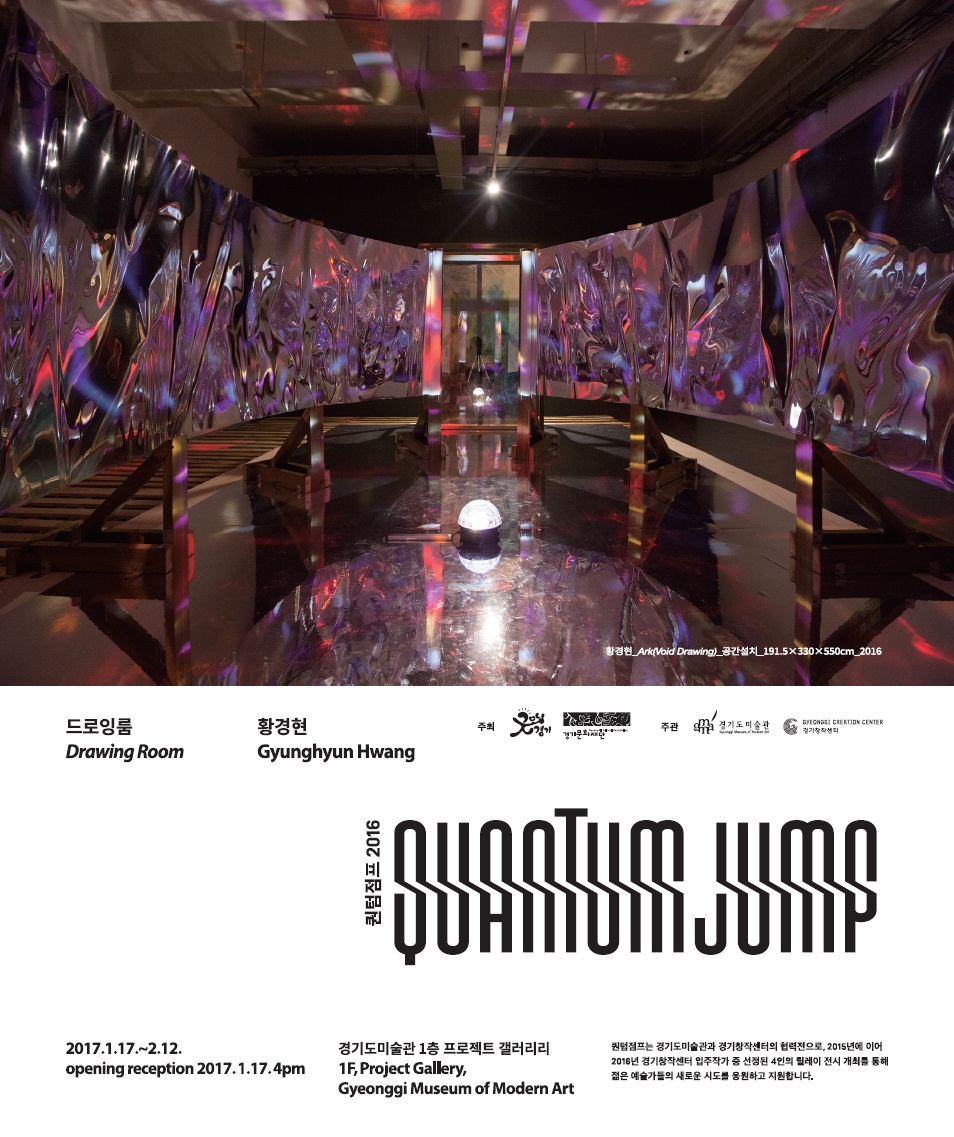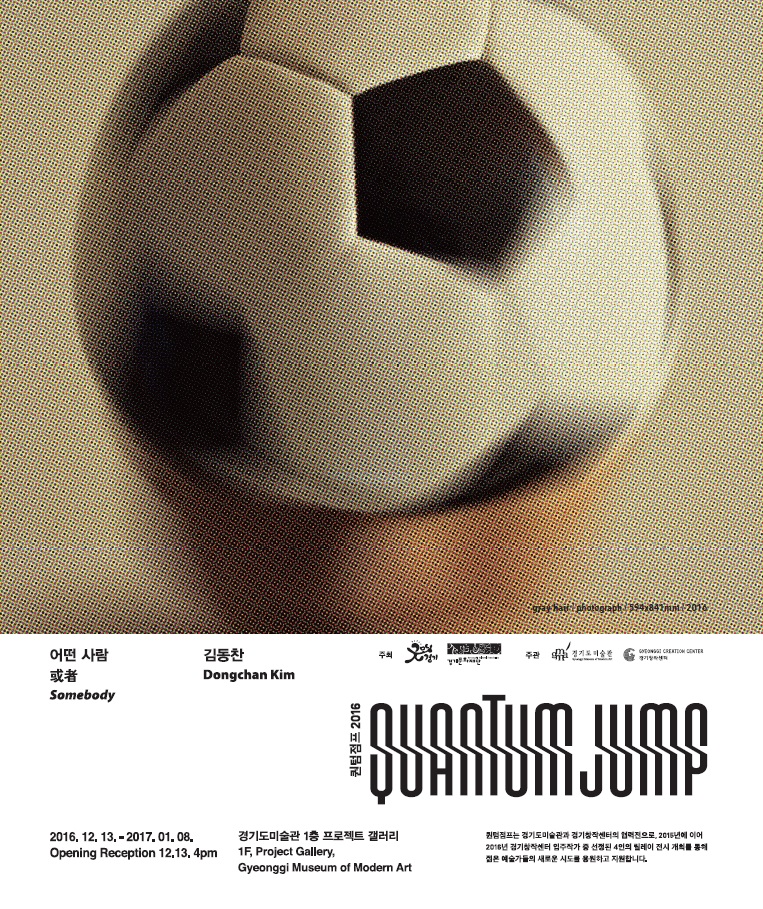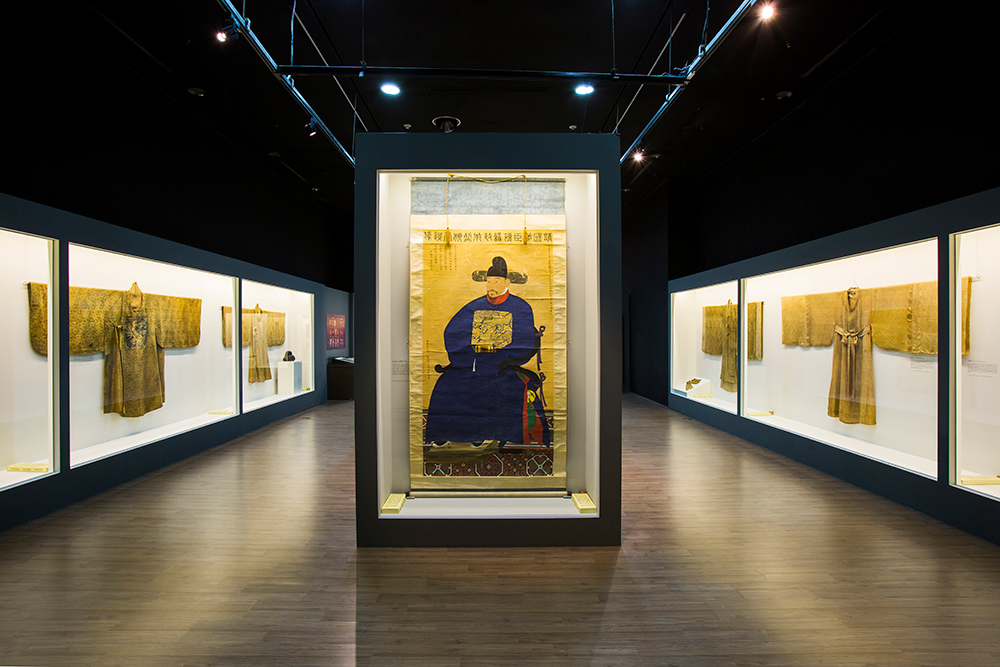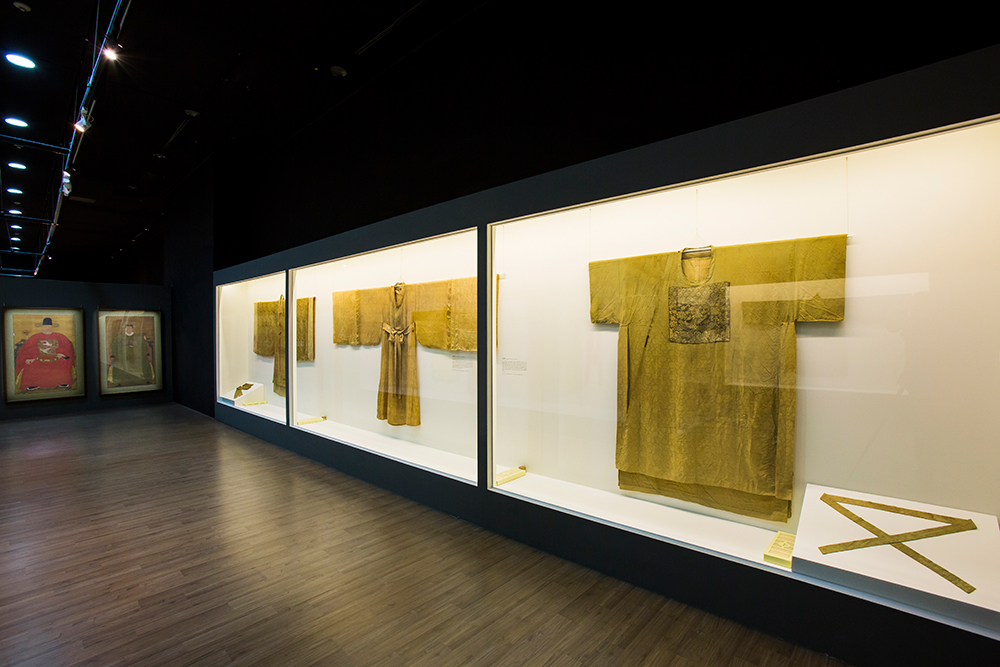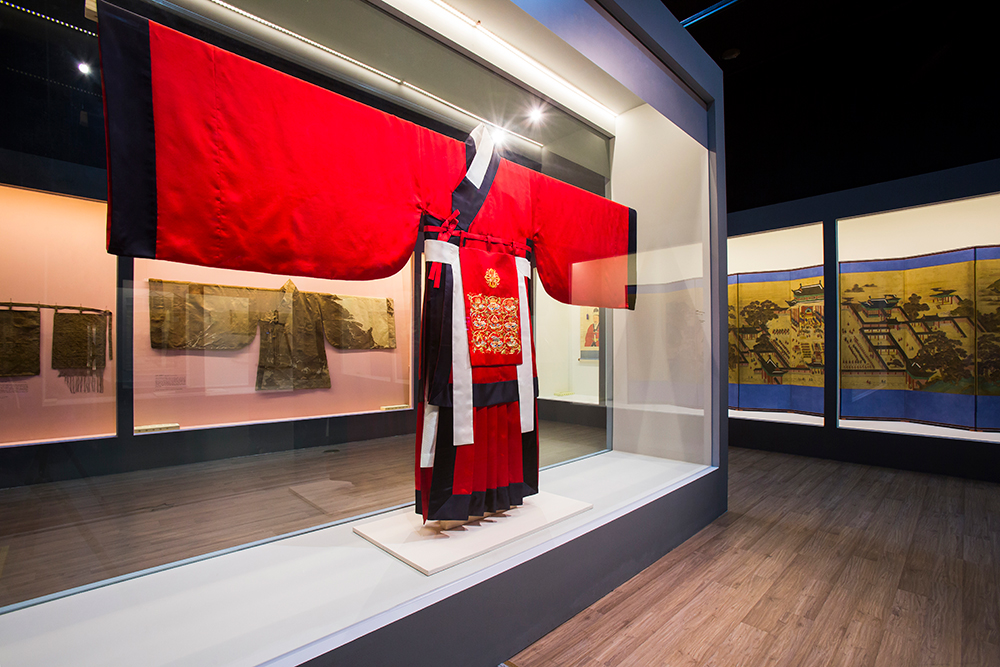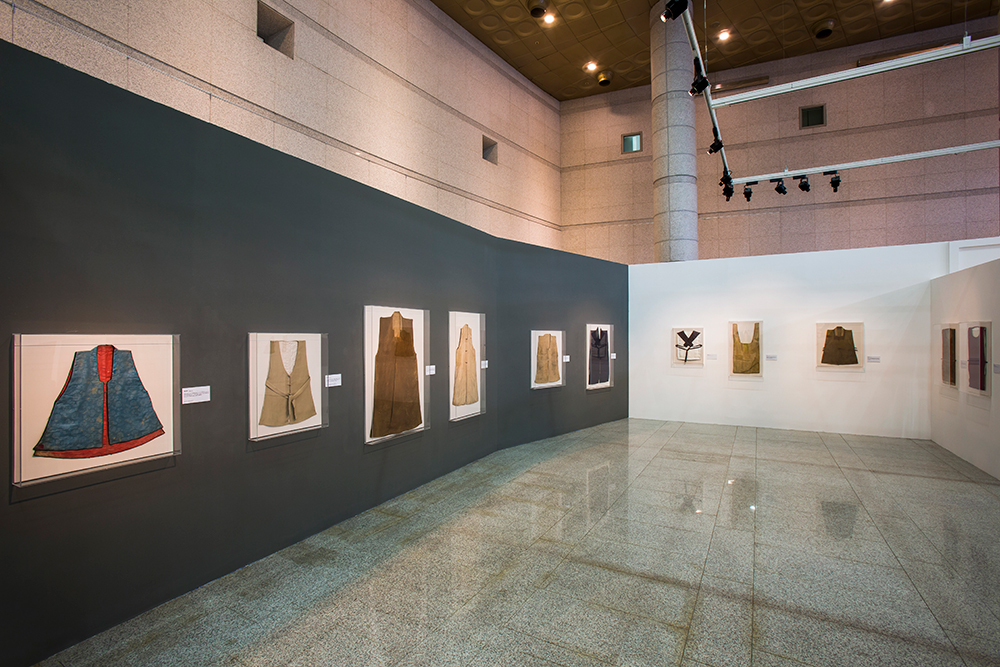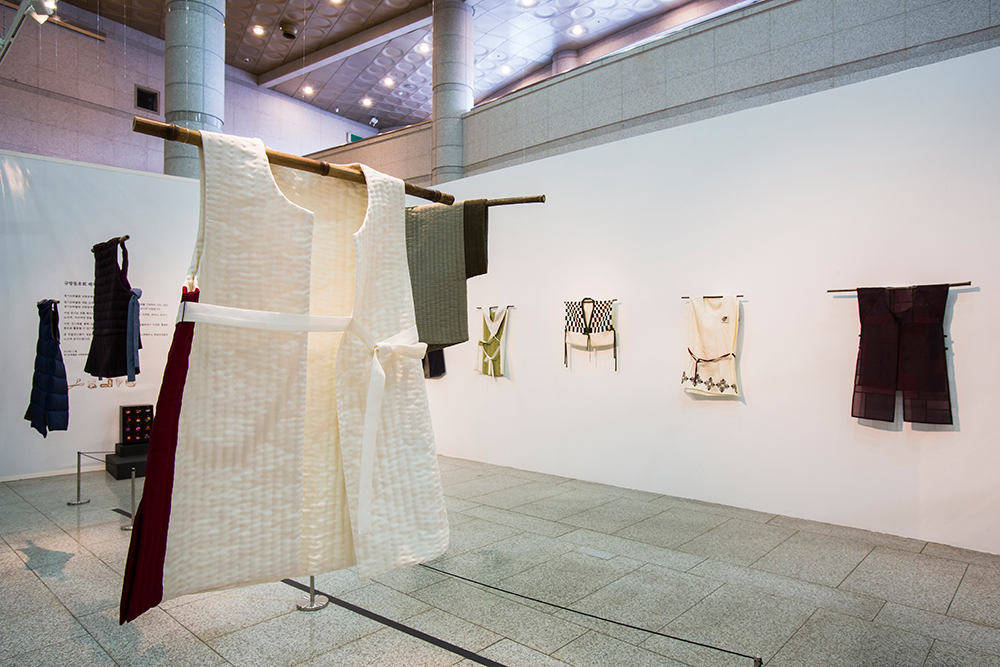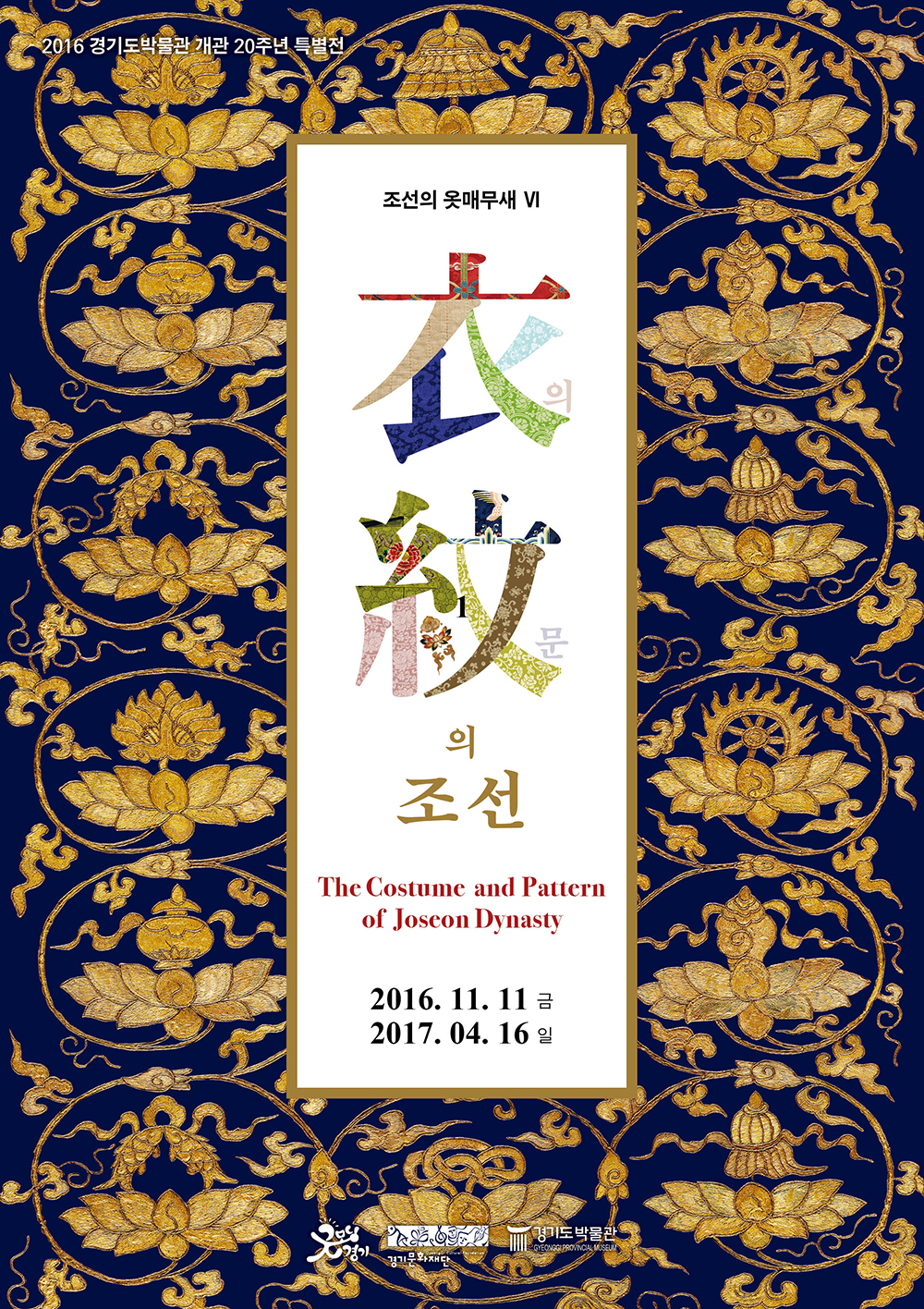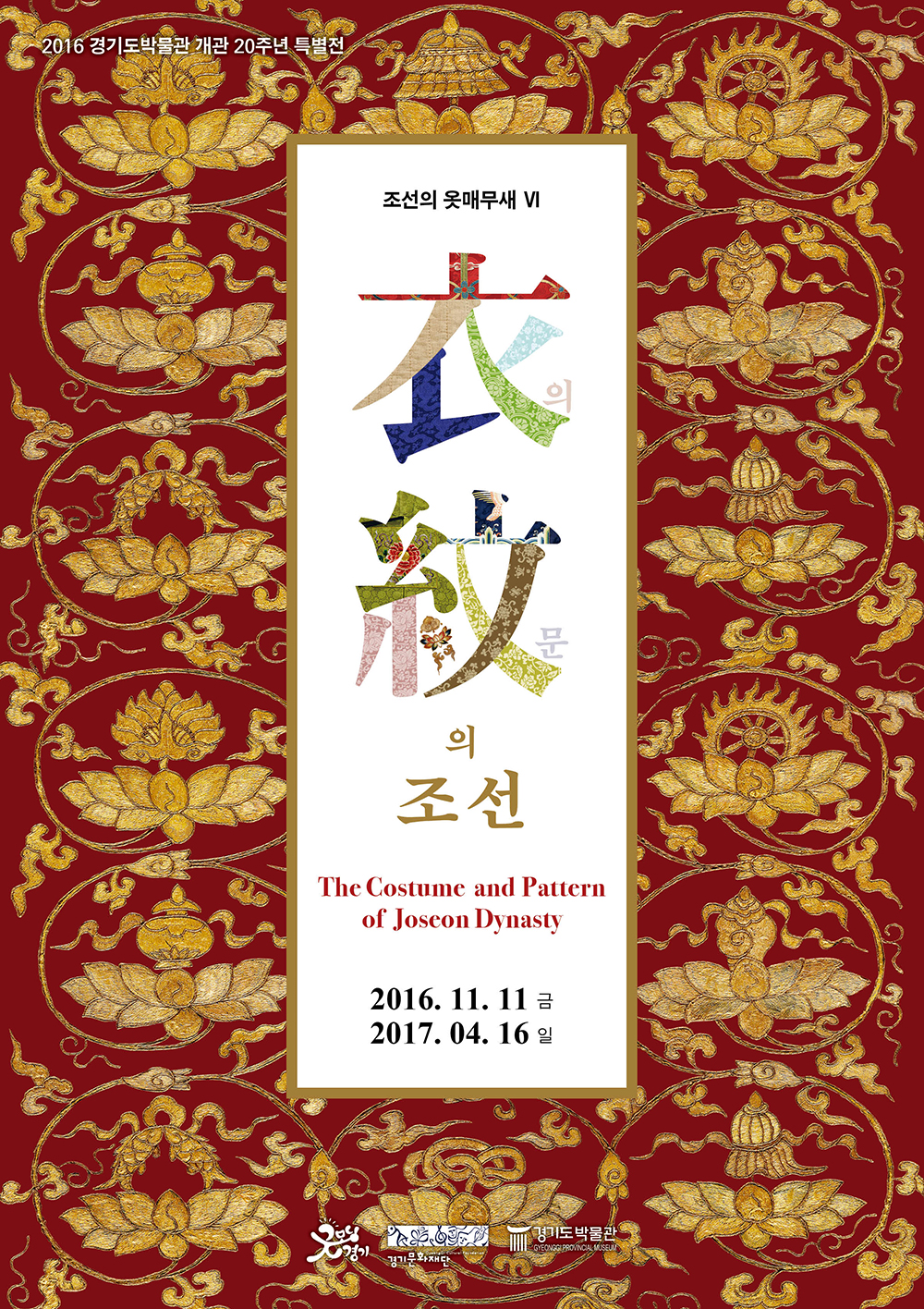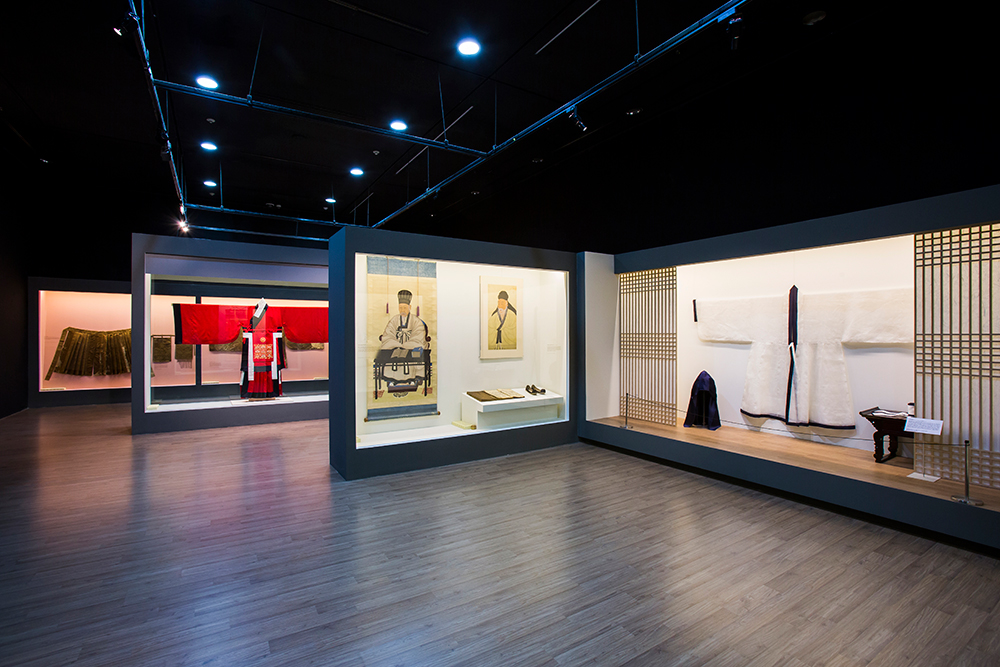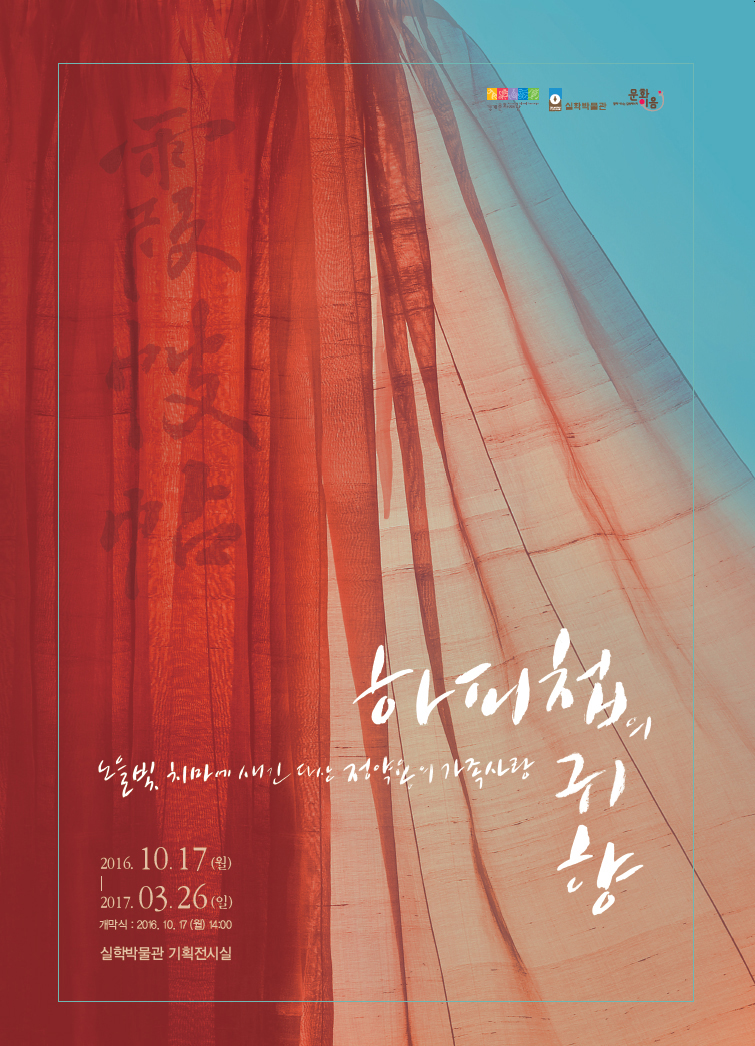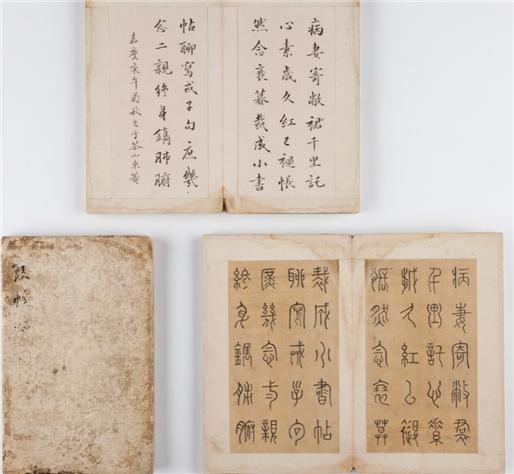1. AES+F(Russia)

Allegoria Sacra, 2011, 5 channel video, color, sound, 39’39”
© AES+F, Courtesy of the artist & Multimedia Art Museum Moscow and Triumph Gallery
Multi-channel video installation piece Allegoria Sacra was inspired by Giovanni Bellini, who discarded the fetters of religious art and spearheaded Renaissance form in the fifteenth century. The international airport symbolizes the Christian Purgatory as the setting – a place of relegation for souls that fall short to being granted entry into heaven yet deserve better than condemnation to hell. Purgatory is not the site of judgment, but rather a gateway for cleansing. Ties to life are severed, leaving earthly existence behind, and then reconnected to the next life ahead, with people awaiting new arrivals while bidding farewell to the departing. At this purgatory of an airport, we become a member of a special district on Earth, sharing the liminal state between body and soul. This piece embodies the Eastern view of seeing finite and infinite life as one through the liminal sphere of Purgatory.
2. Ahmad Ghossein (Lebanon)

The Fourth Stage, 2015, single channel video, color, sound, 37’00”
Chico is a magician for whom Lebanese artist Ahmad Ghossein himself assisted in his childhood. Traveling the southern regions of Lebanon, they dazzled countless children. The Fourth Stage tracks Chico as he grows farther apart from the world. Ghossein, film director and video artist known for his experimental documentaries that explore the hidden contexts of reality along the borders of history and fiction, resumes his journey by investigating the boundaries of historical reality and fiction. In The Fourth Stage, Ghossein pays particular attention to southern Lebanon’s landscape as the setting, and the symbolic human-made objects that inhabit the space. The objects advocate national identity, and the screen, featuring the scenery, resembles the format of promotional materials for tourism. In the time-space of national ideology, history deteriorates into fiction, while fiction exposes the hidden layers of reality. Chico the magician hides away from the world, executing the art of disappearing magic he had performed numerous times on the stage. Ghossein also employs the magic of cinematic imagination in order to sharply hone his critical gaze upon the magical trickery of reality.
3. Aida Makoto (Japan)

The video of a man calling himself Japan’s Prime Minister making a speech at an International Assembly, 2014,
single channel video, color, sound, 26’07”
© AIDA Makoto, Courtesy of the Mizuma Art Gallery, Tokyo
The video features the Japanese Prime Minister giving a speech at an international assembly.
The speech urges countries to stay wary of the allures of globalism, and instead calls for a return to Sakoku – a most restrictive and reclusive international relations policy from the Edo period. The twenty six minute-long speech, by an anonymous figure claiming to the Prime Minister, exposes the innards of twisted nationalism operating within international politics, as well as the logic of globalization as it penetrates the individual desires nestled within the roots of such machinations. The faltering English of the “Prime Minister,” peppered with a Japanese accent, is indicative of Japan’s politics and sentiments; however, the power dynamics it refers to is also the political hegemony of the globe at present.
4-1 ~ 4-5. Apichatpong Weerasethakul (Thailand)

4-1 Fireworks Sketch (Frog), 2014, single channel video, black and white, sound, 1’54”

4-2 For Monkeys Only, 2014, single channel video, color, sound, 1’13”

4-3 One Water, 2013, single channel video, color, silent, 1’11”

4-4 Father, 2014, single channel video, color, silent, 14’07”

4-5 Tone, 2014, single channel video, color, silent, 11’32”
Apichatpong Weerasetakul’s artistic productions are indicative of his intent for us to feel the energy of mysterious harmony and love spread throughout the world. The artist innovatively bridges Buddhist visions of the cosmos, Thailand’s folk traditions, and cutting-edge physics.
To the artist, who has been continuously crossing the boundaries of genre and media including film, exhibition, and performance, the northeastern region of Thailand is the root of his cinematic imagination and creativity.
To the artist, the northeastern region of Thailand is the root of his cinematic imagination and creativity, as well as the path of self investigation. It is a place where forests, Mekong River, and the wounds of war are woven like cinematic montage. The depth of the nature and the violence of civilization offset each other, generating various fantasies and histories. It is a place where its dreams attract urban dweller’s spiritual journeys.
For years, the artist produced countless video sketches and research profiles using a small camera he often carries around. Parts of the video introduced in this exhibition are taken from, or influenced by his feature films Tropical Malady (2004) and Uncle Boonmee who can Recall His Past Lives (2010).
5-1 ~ 5-2. Dinh Q. Lê (Vietnam)

5-1: Everything is a Re-Enactment, 2015, single channel video, color, sound, 26’09”

5-2: WTC in Four Moments, 2014, 4 channel video, color, sound, 6’00”
Dinh Q. Lê has been continuously exploring the theme of the Vietnam War. Both Dinh and Nakaura, the character in the video, have a shared interest even as they differ in perspective and method. They both belong to a group of reenactment enthusiasts who appear to be invested in costume play, but are in fact conducting detailed research on the War. Nakaura was part of a Vietnam War reenactment group, members of which were ready to study and perfectly reenact the daily routines of soldiers from the period, their coverage extending to uniforms, weapons, food, and march songs. Dinh and Nakaura present radically different perspectives toward a single historical event despite their intersecting interest. This video is a documentary that records the artist’s new learning of history as a multilayered narrative based on diverse perspectives.
WTC in Four Moments reuses photographs from the World Trade Center, which fell on September 11th, 2001. The four monitors, stationed to look like long strips, feature photographic captures of four different moments that record the unfortunate building – before the fall, during the collapse, the aftermath, and reconstruction.
Dinh used Adobe Photoshop to extend each of the images as long as 200 meters, and added slow movement in After Effect. The viewers are faced with the conundrum of being unable to identify the image, even as they watch it for a prolonged period of time. The uncertainty of such spectatorship may allude to historical reality, captured through the varying media of image in our time.
6. Harun Farocki (Germany)

In Comparison, 2009, 16mm film, color, sound, 67’25”
© Harun Farocki
In Comparison ‘compares’ the process of building brick houses in Europe, India, and Burkina Faso, Africa, under the simple overarching theme of, literally, ‘building brick houses.’ Bricks are the condensed foundation of human civilization, as well as a linguistic metaphor. Bricks also create space, organize social networks, and store knowledge about social structures. This work conveys a resonant message regarding the sufficiency (or insufficiency) of these phenomena, which we unfortunately do not heed. The artist invites us to ponder on the concept of comparison instead of competition by leading our ears and eyes, and molds out a story about the theory of unity across the East and West.
7. Hayoun Kwon (Korea)

489 Years, 2016, single channel video, color, sound, 11’00”
489 Years refers to the estimated time required for removing the landmines buried in the soils of the Korean peninsula. The DMZ (Demilitarized Zone) is the most conspicuous indicator of Korea’s dichotomous ideological history. One million and six hundred thousand troops line the DMZ on the southern and northern sides of the borders, leaving little space for individual imagination or the liberty of speculation. Hayoun Kwon reconfigures this society with various individual stories, deconstructing the hegemonic rule of ideology in the Korean society. 489 Years is a most subjective space of memory, restructured based on the memories of DMZ search troops Kwon interviewed during her stay in Paju, a city of the DMZ, in 2014. The DMZ, converted into 3D computer graphics based on photography, assail our senses as an imaginary world where the nation and the individual, reality and fiction, tension and relaxation, fear and joy, confinement and liberty, and the artificial and the natural coexist
8. Ho Tzu Nyen (Singapore)

The Cloud of Unknowing, 2011, single channel video, color, sound, 30’00”
The Cloud of Unknowing is titled after fourteen–century mystical treatise on religious faith, where the cloud is a paradoxical metaphor for both an impediment to, and reconciliation with, the divine experience. Set in a deserted, low–income housing block in Singapore, the video revolves around eight characters in eight apartments, each in the midst of an activity that brings them into an encounter with a cloud that takes a form of a character from a well–known painting of West or East. Each encounter accompanies sensory changes and performative identity transformation.
In his audiovisual works, Ho Tzu Nyen has blended mythical, historical, and philosophical references to address the difficulties in translating contemporary art discourses from a Southeast Asian perspective.
The cloud of Unknowing incorporates both of the Eastern and the Western icons to pose an organic, fantastic, and multifaceted scope towards history and art
9. Ji Hye Yeom (Korea)

A Night with a Pink Dolphin, 2015, single channel video installation, color, sound, 21’30’’
A Night with a Pink Dolphin begins with a short trip to the Amazon jungles in Brazil. This video, recorded on site, was inspired by an ancient folklore originating from the area, according to which young unmarried women who swim in the Amazon River conceive the child of a pink dolphin. The dolphin, called “boto,” transforms into a gorgeous young man to dazzle and abduct women, taking them to the enchanted underwater city of Encante. Rather than focusing on the surface–level narrative of the pink dolphin, the artist illuminates the transformations and metastases arising from the tale’s contact with other cultures and unfamiliar situations within the capitalist framework. To sublimate cultural transformation and metastases from negativity to positivity, the artist dispels the downsides of cultural deformation by projecting her own subjective imagination on to the mysterious and beautiful miseen-scéne.
10. Meiro Koizumi (Japan)

Autopsychobabble #2, 2011, Performance video at The Fundacio Pilar i Joan Miro, Mallorca, Spain, on October 25th, 2011, color, sound, 25’00”
Autopsychobabble #2, a performative video appropriation of Ozu Yasujiro’s film Last Spring (1949), presents two different bold approaches to the history and scars of Japan as a nation. First, the video’s feature actress Setsuko Hara was the archetype of the ingénue in Japan’s film history, most widely known to generations in their 40s and 50s. This in turn means that she served as lead character in countless propagandist materials for Imperial Japan. People saw her only as “The Eternal Virgin” until she retired in the age of 42. She never appeared in public thereafter, and remained unmarried; not even a single photograph appeared in print until her death last year. She was playing the role of the eternal virgin all her life, both on screen and in reality.
Second, film maker Yasujiro who served to the WWII in China but no one mentioned about his private life at all although he was one of the most respected directors in Japan. After the War, Ozu’s films all carved out a most subtle and beautiful portrayal of family relations. However, we can still identify indirect references to the wounds and repressed memories of war in his works.
11. Moon Kyungwon & Jeon Joonho (Korea)

MYOHYANGSANGWAN, 2014–2016, HD film, color, sound, 16’15”
MYOHYANGSANGWAN is a North Korean restaurant located in Beijing, China. The video features a South Korean artist’s night out at the restaurant, where he encounters and develops feelings for a mysterious North Korean server while enjoying a celebratory occasion with friends. The piece presents a compellingly tense portrait of the peculiar atmosphere, shifting feelings, values, and situations through mimes, creative dance, and performance.
Gathered at MYOHYANGSANGWAN, people engage in metaphysical discourse on art, become enamored with a beautiful North Korean woman, and feel the ideological conflict between the South and the North.
MYOHYANGSANGWAN is an alternate dimension where the unreal and the reality of capital coexist, defying the reductionist frame of compressed development. The artist paints Korea in a dreamy, human-centered hue, breaking away from Korea’s prescribed image as an ideologically divided country through this liberated space.
12. Muntean & Rosenblum (Austria, Israel)

Disco, 2005, single channel video, color, sound, 5’53”
© Courtesy of the artists & Georg Kargl Fine Arts, Vienna
Disco is a video work that weaves Géricault’s 19th century masterpiece The Raft of the Medusa (1819) into contemporary club culture.
The piece presents an exaggerated and dramatic portrait of people, set in a chaotic club in the process of closing down for the night. The Raft of the Medusa was inspired by a historical event; a grand warship dispatched to colonize new territories becomes shipwrecked by an incompetent captain who had bribed his way into the position. The upper class passengers escape on the lifeboats, but the lower class deck passengers who failed to securing seats were left adrift on a small raft, killing and cannibalizing one another for survival over the span of fifteen days until being rescued.
By thus recreating one of the most heinous crimes committed against Western Christian ethics and reason, Géricault urges us to reconsider the meaning of human existence.
The artist refines the wretchedness depicted in the painitng into sublime beauty through Disco.
Exposing the social chasm created under the reign of capitalism, and pushing against the inequity of West-centered globalization, the artist proposes a hopeful message of a more harmonious merging of nations, societies, and individuals
13. Nalini Malani (India)

In Search of Vanished Blood, 2012, single channel video, color, sound, 11’00”
Courtesy of the Gallery Lelong
In Search of Vanished Blood, a video artwork by India’s pioneering video artist Nalini Malani, may appear to be a mythical tale or narrative from far away, long ago. However, the narrator’s voice that emerges with the images is a performative monologue by a brutally gang-raped woman.
This work is also inspired by prominent contemporary German artist Christina Wolf’s Cassandra (1983), particularly in her attempts to portray the struggles of women artists, as well as Rainer Maria Rilke’s The Notebooks of Malte Laurids Brigge (1910).
The artist, who had to evacuate to Mumbai on a refugee boat along with her family at the most critical moment of India’s history of independence in the 20th century, has been presenting unique video installations that convey political messages across various media.
Inspired by Pakistani poet Faiz Ahmad Faiz’s work and using motifs from ancient Hindi and Greek mythology, the artist deals with themes ranging from migration, globalism, destitution, and the discrimination or oppression of woman.
14. Song Dong (China)

BEGINNING END, 2017, 2 channel video installation, color, silent, BEGINNING: 86’00”, END: 24’00”
Song Dong collects logos from film production companies and studies, reflecting them on ink. He shakes up the ink with wind-generating mechanisms, making the ink shake the mirror to create anamorphic, mobile imageries. The ink is like a mirror that reflects these images. Two screens are installed to appear like corridors, and viewers walk through or around these screens while two projectors present the images. Through the process of cognizing and recreating the unreal presence of images along lights and shadows, and by “dressing” impending temporalities with the past, the artist prods the viewers to experience “true virtuality,” which could be seen as yet another mirror of life.
15. Wael Shawky (Egypt)

Al Araba Al Madfuna III, 2016, film, black and white, sound, 27’00”
© Wael Shawky, Courtesy of the Lisson Gallery
Developed while traveling the relics of Al Araba al Madfuna standing adjacent to North Egypt’s capital Abydos, this video is the third installment of an eponymous trilogy. Inspired by Egyptian writer Mohamed Mustagab’s short story Sunflower in his design of visual details, the artist generates a subtle sense of existence anew, amidst the clashing combination of dazzling narrations and the awkward bodies of children.
The presence of dramatic child performers set the atmosphere, as they naturally float about between dream and reality donning adult clothing and speaking in grown–up voices at the Temple of Pharaoh Seti. The incongruity between the historicity of the setting and the surreal milieu of the piece come together to create a defamiliarizing effect. The artist presents a comprehensive overview of the present and imaginary past histories even as he mixes in his own experience and references to the short story. The richly layered theme of the video embraces the poetic language of the text, reflections about traditions, the persistence of Western perspectives in Egypt, and the diverging threads of history seen from the Middle Eastern and Arab worlds.
16-1 ~ 16-2. Xu Bing (China)

16-1 Book from the Ground Pop-up Book (Day), 2015, video and installation of Book from the Ground Pop-up Book (Day), color, sound, 6’20”

16-2 (Right) Book from the Ground Pop-up Book (Night), 2016, video and installation of Book from the Ground Pop-up Book (Night), color, sound, 3’50”
© Xu Bing Studio
In Book from the Ground Pop-up Book, Xu Bing introduces an urban salary man called Mr. Black and his busy daily routine through the universally accessible imageries of symbolic digital icons or pictograms that converge upon the form of a pop-up book. The artist creates a novel that depicts the usual daily routine of Mr. Black as an ordinary every-man figure using pictograms, logos, illustrations, and emoticons that are used world-wide. The video introduces events that transpire over 24 hours, beginning at 7am; Mr. Black wakes up and gets out of bed, has breakfast, goes to work, meets a friend, looks for a date online, and goes off to meet his newfound date. This work requires neither translation nor interpretation. Anyone living in our contemporary world could easily understand and even share Mr. Black’s experience by simply watching the images. In the bygone age of pictorial language, humanity represented all worldly objects through pictorial signs, exchanging information and communicating on both individual and social levels. Since then, textual language was devised on the grounds of science and logic, entailing radical cultural advancement and the rapid progress of civilizations. We of the 21st century now live under a new social paradigm, wherein language is undergoing conversion from pictorial to textual, and then digital-pictorial form. In the future, digital pictorial language will be the main channel of communication and information-sharing.
17. Yang Fudong (China)

On the Double Dragon Hills, 2012, 2 channel video, black and white, silent, 25’50”
Courtesy of the artist and ShangART Gallery
This video reflects on the daily lives of the low– income workers artist met at the blue stone carving factory in Shandong Province, China.
Yang tells the story of the workers to the world, illuminating the labor conditions of the low– income class in China’s northern regions. The laborers work to produce blue Kylin sculptures, a representative commodity thought to gift prosperity to capitalists. Allowing for a genuine look into the lives of Chinese laborers, this work invokes the value of artists residing in rural areas to reconfirm social reality, while gesturing to the purity of socialist art, reminding us of the significance of art as at once a social and public site in the 21st century.
Through his sculpting process, the artist paints a humorous yet beautiful portrait of the dual facets of the laborers’ rusticity and the aristocratic glamour of the objects they produce, both of which represent China’s rapid transformation into a capitalist nation.




